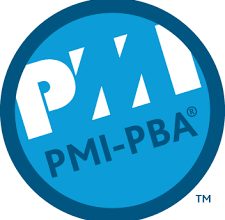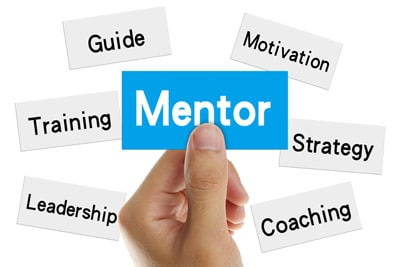Project managers spend their days managing budgets and following timelines, focusing primarily on completing a project as swiftly and cheaply as feasible. While it is true that project managers are frequently concerned with project timetables and budgets, a genuinely good project manager considers other issues as well. Communication management, risk management, and stakeholder engagement are all critical aspects of the work. This third point—stakeholder engagement—is frequently missed, particularly by novice project managers. They do not always appreciate the power that stakeholders have over the success or failure of a project. So below, we’ll look at the stakeholder engagement plan, discuss the components of the strategy, and lead you through the steps you can take to write one for the first time. You’ll also learn how to manage your stakeholder engagement strategy effectively.
What is a Stakeholder Engagement Strategy?
Certain organizational actions will have an impact on and interest many distinct stakeholder groups.
For example, if a council wished to create a memorial to honor local war soldiers, they could confer with relatives about the idea. They can also engage with a local sculptor on the design, and notify the media to help publicize its introduction.
However, all stakeholder groups are not equal. Some may need to be kept up to date on changes regularly. For others, you have to keep occasional contact.
A stakeholder engagement strategy will assist you in determining how frequently you need to communicate with each group and which technologies to employ for each.
Why do you need a Stakeholder Engagement Strategy?
Depending on the industry, good stakeholder engagement can result in more customers, better-formulated policies, well-managed projects, innovation, and more.
What is a Stakeholder Engagement Plan?
A stakeholder engagement plan is a subsidiary document that is frequently developed alongside the main project plan for a specific body of work. It is a written document that is created before the start of a project. It’s kept on file and you can modify it when you need it throughout the project. So, its goal is to identify a project’s main stakeholders and to describe a technique and approach for how the project team will interact and communicate with those stakeholders.
“Stakeholder engagement is simply figuring out how to successfully communicate, collaborate, and connect with key people who have a positive or negative influence and may impact the outcome of your project,”
Source: Tim Mills
The Importance of a Stakeholder Engagement Plan
All projects have stakeholders. These are the persons, generally in management, who have a personal and professional stake in the project’s success.
Stakeholders can have a large influence on how a project moves forward. They authorize and provide resources to the project. Also, they may even decide to delay or terminate a project entirely if they believe it is not achieving the expected or intended results. The project team must specify a method for managing these expectations. This is because all stakeholders will be involved to varying degrees and may have their own motivations or expectations for a project.
“Communicating with the primary client differs from communicating with the project team, who may be more concerned in what they need to do to effectively execute the project,” Mills explains. The stakeholder engagement plan enables the project manager to develop a systematic approach to ensuring that expectations, decisions, risks/issues, and project progress information are provided to the right person at the right time with the most efficient and effective level of information.
Read Also: Stakeholder Management Planning And Strategies
What goes into a Stakeholder Engagement Plan?
A stakeholder engagement plan has three sections:
#1. Identifying Stakeholders
This section is will identify all of the project’s stakeholders by name. At a minimum, the section describes their tasks and responsibilities as they relate to the project. However, it can be considerably more thorough in some circumstances.
A comprehensive stakeholder engagement plan would also categorize stakeholders by power, influence, relationship (internal or external), or any other category that the project manager could find useful in managing communications.
#2. Intention to Interact with Stakeholders
The following section identifies how the project team will interact and engage with the stakeholders defined in the first section of the plan. According to Mills, this will frequently entail a more in-depth assessment of each stakeholder, which will be used to inform the rest of the plan.
For example, we could evaluate the stakeholder-based on the extent of perceived engagement. Are they aware, resistant, neutral, supporting, or in charge of the project? This knowledge will assist the project manager in devising ways to engage stakeholders in a way that raises their awareness of the project’s essential concerns or encourages them to become more supportive of the project’s success.
#3. Stakeholder Engagement Activities
The final section of the plan is essentially a summary of the many activities that the project team will do to communicate with stakeholders, manage their expectations, and keep them engaged with the project. This covers actions such as pre-planned meetings with stakeholders or crucial reports.
Additionally, having an outline of the known engagement activities allows the project manager and team to swiftly perceive and respond to the changing demands of the stakeholders.
This section of the paper will also often detail the sorts of communications that will be utilized throughout the project, such as email, periodic meetings, conference calls, and so on, as well as who each form of communication is most suited for.
How to Make a Stakeholder Engagement plan
#1. Determine who will be part of your project’s stakeholders.
The first stage in developing your stakeholder engagement plan is to clearly define who should be included. While there are numerous strategies you can use to compile this list, I propose beginning with three specific tactics.
First, meet one-on-one with the project sponsor (the person accountable for the project’s success). Use this discussion to explicitly define their project expectations, as well as any risks or difficulties they may have with the defined plan.
Secondly, you can get a decent start by looking at a previous similar project and comparing it to your own. Consider factors such as:
- Who were the project’s stakeholders?
- Should they be a part of this one?
- If not, who should be their counterparts?
- Was there anyone left out of the original project who you believe should be part of this one?
Finally, a mind map, which is a visual representation of those who may have an impact on the project, will be created.
#2. Create and implement effective methods of interacting with each stakeholder.
With your list of stakeholders in hand, you can plan planning how you will communicate and interact with each of the people you’ve identified. You should modify this plan to suit each individual, taking into account their specific communication preferences as well as their level of engagement in the project.
Assess the following areas when appraising each stakeholder:
- What they are already aware of the project
- What they must be aware of
- Their ability to influence or affect the project
- Their enthusiasm for the idea is palpable.
#3. Keep a record of your work.
The final step in developing your stakeholder engagement plan is to document and formalize the effort. At this point, you distribute the document to your whole project team so that everyone may verify and modify the collected data, as well as evaluate any last-minute adjustments or additions.
What Strategies do you use to Manage Stakeholder Engagement?
Creating a stakeholder engagement strategy is quite easy on the other hand, to manage it is more challenging.
Let’s see the entire procedure of how to manage your stakeholder engagement strategy.
#1. Examine your stakeholders.
Never assume you know who all of your stakeholders are; always confirm. Cambridge Dictionaries Online defines a stakeholder as:
“A person, such as an employee, consumer, or citizen, who is associated with an organization, society, or other entity and hence has responsibilities to it and an interest in its success.”
You may rapidly identify both internal and external stakeholders using this criterion. The following step is to categorize those stakeholders into four groups:
- Low interest and influence: Those with little interest and influence should be kept informed.
- High interest, low influence: These are the people you should involve and consult with.
- Low Interest and high influence: You must engage powerful stakeholders who have little interest but a lot of power.
- High interest, high influence: Partners with whom you must collaborate
This allows you to identify the most effective strategies for engaging and communicating with each group. To assist you o manage the strategy, you may create a simple stakeholder engagement strategy matrix, such as this one, based on the priorities of an NHS Commissioning Group.
#2. Define your goal.
A clear purpose is essential to manage stakeholder engagement effectively. When you have a clear goal in mind, the engagement process becomes more relevant for everyone involved.
The outcomes you need to reach through stakeholder engagement will vary depending on your industry and particular business. Common purposes in the public sector, for example, include:
- Policy formulation
- Creation of shared services
- Growth of tourism
- Initiatives to Protect the Environment
- Curriculum creation
- Campaigns for health care
- Initiatives to Reduce Crime
Similarly, if you work in retail, you may want to meet with stakeholders to:
- Create items
- Create special offers.
- Develop a pricing strategy.
- Create new retail outlets.
- Enhance service levels
- The interior design of retail establishments
With a clear aim in mind, you can use your matrix to identify relevant stakeholders and manage their engagement in the most appropriate way – cooperating, showing consideration, informing them – depending on how active and influential they are.
#3. Align available tools with specified stakeholders.
Once you identify your stakeholders and set your goals, it’s time to locate the finest tools for informing, consulting, or collaborating with them.
When it comes to selecting digital tools for stakeholder collaboration, we propose making a map similar to the one below and superimposing it on your original matrix. Traditional stakeholder engagement tools, such as paper questionnaires, information roadshows, face-to-face meetings, and newspaper advertisements, can be used in the same way.
#4. Select the best methods and technologies for the job.
It can be intimidating to construct a matrix of digital or traditional engagement tools for the first time. It may appear that you must invest in a variety of procedures and technologies, which can be costly, time-consuming, and inefficient.
Furthermore, investing in a versatile online collaboration package allows you to think large and start small, broadening the scope of your stakeholder engagement plan as new projects emerge.
Strategy Engagement FAQs
What are the five levels of stakeholder engagement?
Stakeholders can be classified into one of five degrees of engagement: “Unaware,” “Resistant,” “Neutral,” “Supportive,” or “Leading.” It is critical to assess each stakeholder’s present level of engagement and ensure that they all become supportive of the project.
What is the purpose of stakeholder engagement?
Stakeholder engagement is the process by which organizations communicate with and learn about their stakeholders. Firms may better understand what people want when they want it, how involved they are, and how the companies’ plans and activities will affect their goals by getting to know them.
What does a stakeholder engagement plan look like?
A stakeholder engagement plan includes stakeholders, including their interests, emphasizes their power and influence, and defines the methods to be utilized to carry out stakeholder engagement.






